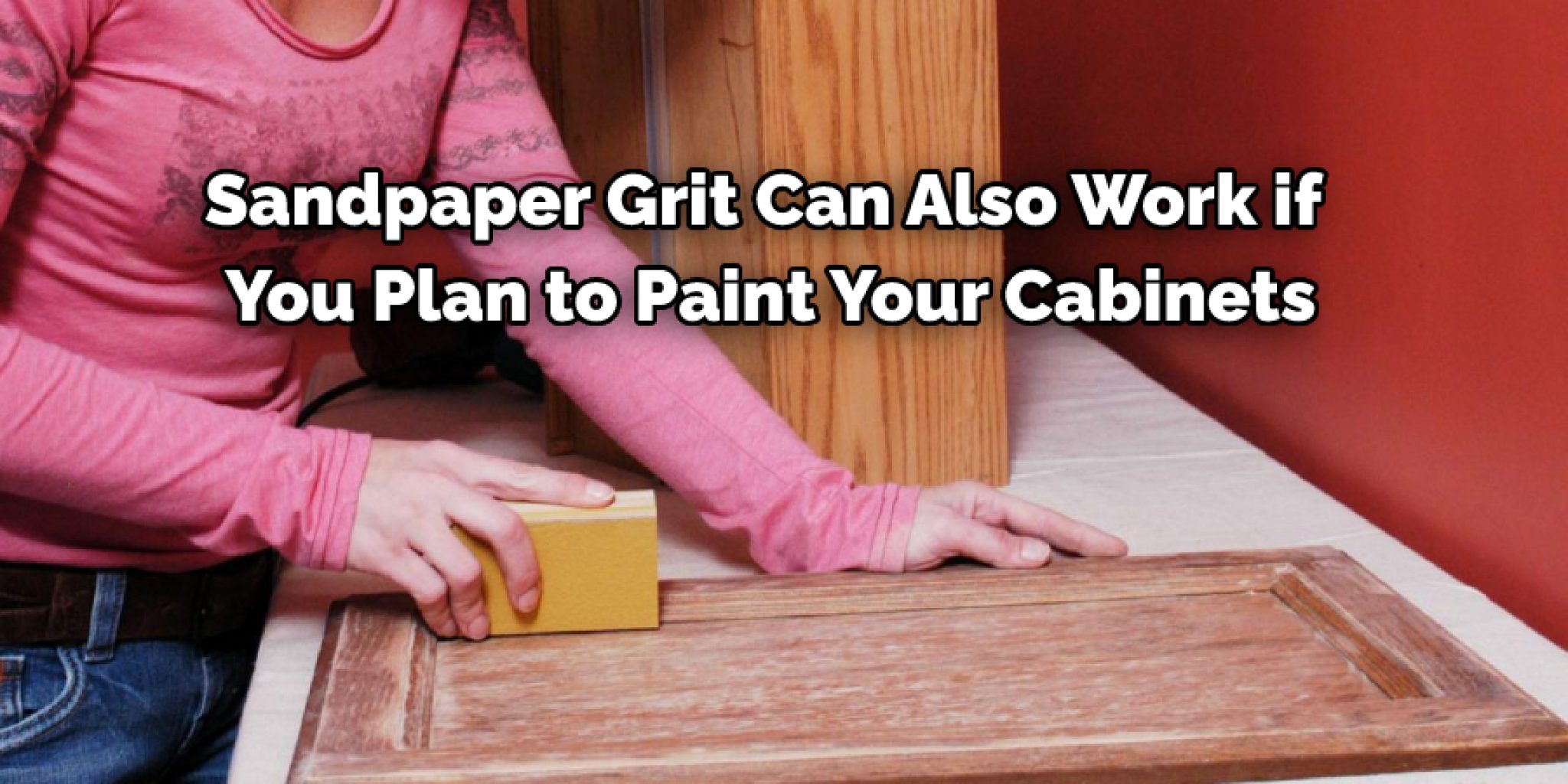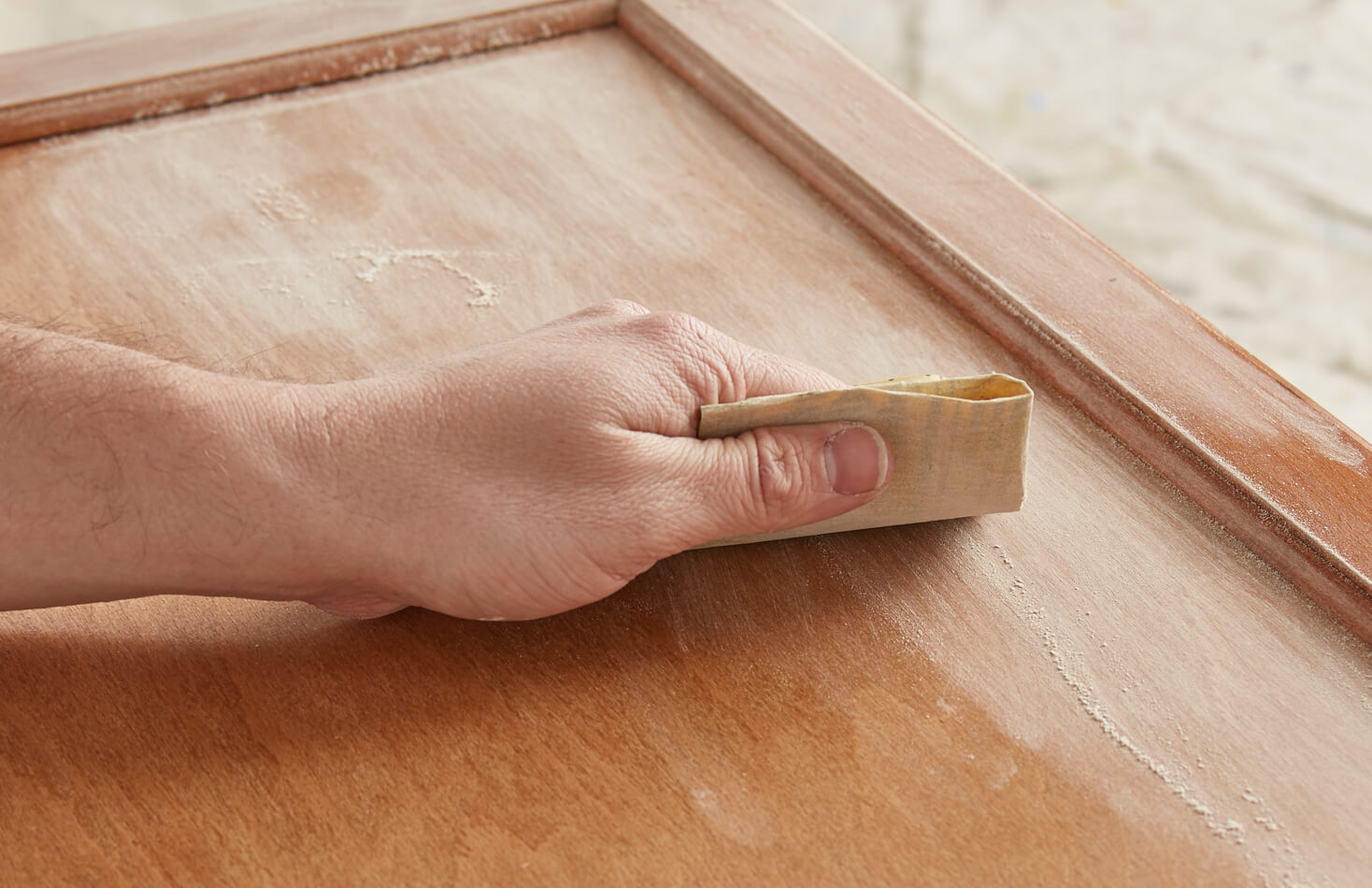Understanding Grit Levels

The grit of sandpaper is a crucial factor in determining its abrasiveness and suitability for refinishing kitchen cabinets. Understanding the grit numbering system and its relationship with sandpaper abrasiveness is essential for choosing the right sandpaper for each step of the refinishing process.
Sandpaper Grit Numbering System
The grit numbering system for sandpaper is a standardized method for indicating the coarseness or fineness of the abrasive particles on the sandpaper. A higher grit number indicates finer abrasive particles, resulting in a smoother finish. Conversely, a lower grit number indicates coarser abrasive particles, leading to a rougher finish.
Relationship Between Grit and Abrasiveness, What grit sandpaper for refinishing kitchen cabinets
The relationship between grit and abrasiveness is inversely proportional. This means that as the grit number increases, the abrasiveness of the sandpaper decreases. For example, 80-grit sandpaper is coarser and more abrasive than 220-grit sandpaper.
Common Grit Levels for Refinishing Kitchen Cabinets
- 80-grit sandpaper: Used for removing old paint, varnish, or other coatings. This coarse grit effectively removes imperfections and prepares the surface for subsequent sanding steps.
- 120-grit sandpaper: Used for smoothing out rough surfaces after using 80-grit sandpaper. It helps to remove any remaining imperfections and prepares the surface for finer sanding.
- 180-grit sandpaper: Used for removing scratches and imperfections left by coarser grit sandpaper. It helps to create a smoother surface and prepares the surface for finishing.
- 220-grit sandpaper: Used for final sanding before applying paint or varnish. It creates a very smooth surface, minimizing imperfections and enhancing the final finish.
- 400-grit sandpaper: Used for polishing the surface after applying paint or varnish. It helps to create a smooth and glossy finish.
Grit Level Comparison Table
| Grit Level | Application in Cabinet Refinishing |
|---|---|
| 80-grit | Removing old paint, varnish, or other coatings |
| 120-grit | Smoothing rough surfaces after using 80-grit sandpaper |
| 180-grit | Removing scratches and imperfections left by coarser grit sandpaper |
| 220-grit | Final sanding before applying paint or varnish |
| 400-grit | Polishing the surface after applying paint or varnish |
Choosing the Right Grit for Refinishing Kitchen Cabinets: What Grit Sandpaper For Refinishing Kitchen Cabinets

Choosing the right grit sandpaper for refinishing kitchen cabinets is crucial for achieving a desired finish. The grit level determines the coarseness of the sandpaper, which in turn affects the level of sanding and the final appearance of your cabinets. Understanding the condition of your cabinets and the desired finish will help you choose the appropriate grit levels for each stage of the refinishing process.
Identifying Cabinet Condition and Desired Finish
The initial condition of your cabinets significantly influences the grit levels you’ll use.
- Painted Cabinets: If your cabinets are painted, you’ll need to strip off the old paint before applying a new finish. This involves using progressively finer grits to remove the old paint and create a smooth surface for the new finish.
- Stained Cabinets: If your cabinets are stained, you might be able to refinish them without stripping the stain. This depends on the condition of the stain and the desired finish. If the stain is uneven or damaged, you’ll need to strip it off before applying a new stain.
- Heavily Damaged Cabinets: Cabinets with significant damage, such as scratches, dents, or water damage, will require more sanding to repair the damage and create a smooth surface.
The desired finish for your cabinets also influences the grit levels you’ll use.
- Smooth Finish: For a smooth finish, you’ll need to use progressively finer grits to remove any imperfections and create a polished surface.
- Rustic Finish: For a rustic finish, you might use coarser grits to create a distressed look.
- Distressed Finish: A distressed finish often involves using coarser grits to create a worn or aged appearance.
Stages of Cabinet Refinishing and Corresponding Grit Levels
Cabinet refinishing typically involves several stages, each requiring specific grit levels:
- Stripping: If you’re stripping old paint or stain, you’ll start with a coarse grit sandpaper, such as 80-grit, to remove the old finish. You can then progress to finer grits, like 120-grit and 180-grit, to smooth out the surface.
- Sanding: After stripping, you’ll sand the cabinets to create a smooth surface for the new finish. You can start with a medium grit sandpaper, such as 120-grit, and progress to finer grits, like 180-grit, 220-grit, and 400-grit, to achieve a smooth finish.
- Finishing: After sanding, you’ll apply the new finish, such as paint or stain. You may need to lightly sand between coats to create a smooth finish.
Step-by-Step Guide for Choosing the Right Grit Sandpaper
- Assess the condition of your cabinets: Determine if they are painted, stained, or heavily damaged.
- Identify your desired finish: Decide whether you want a smooth, rustic, or distressed finish.
- Choose the appropriate grit for each stage: Start with a coarse grit for stripping, progress to medium grits for sanding, and finish with fine grits for achieving a smooth finish.
- Sand in the direction of the wood grain: This helps to avoid scratches and create a smooth finish.
- Use a sanding block: This helps to ensure even sanding and prevents uneven sanding marks.
Techniques and Best Practices

Sanding kitchen cabinets is a crucial step in the refinishing process, requiring the right techniques to achieve a smooth and even finish. Proper sanding techniques ensure a flawless final coat and enhance the overall appearance of your cabinets.
Sanding Techniques with Different Grit Levels
The sequence of sanding with different grit levels is essential for achieving a smooth surface. Each grit level plays a specific role in preparing the surface for the next.
- Coarse Grit (40-80): This grit is used for removing old paint, varnish, or any significant imperfections. It is generally used for initial stripping and smoothing out uneven surfaces. Apply even pressure and use long, even strokes in one direction.
- Medium Grit (100-120): This grit is used to smooth out the surface after the coarse grit. It removes scratches left by the coarser grit and prepares the surface for finer sanding. Sand with the grain of the wood for a smooth finish.
- Fine Grit (150-220): This grit is used to refine the surface and remove any remaining imperfections. It creates a smooth and even surface ready for the final finish. Sand with the grain of the wood for a consistent finish.
- Very Fine Grit (240-400): This grit is used for final sanding and achieving a polished surface. It removes any remaining sanding marks and creates a smooth, even finish. Sand lightly with the grain of the wood.
Sanding Direction and Pressure
Sanding direction and pressure are crucial for achieving a smooth and even finish.
- Sanding Direction: Always sand with the grain of the wood. Sanding against the grain can create scratches and imperfections that are difficult to remove. This creates a consistent and aesthetically pleasing finish.
- Sanding Pressure: Apply even pressure while sanding. Too much pressure can cause gouges in the wood, while too little pressure will not remove enough material. Use a light touch and let the sandpaper do the work.
Tips for Achieving a Smooth and Even Finish
Here are some tips for achieving a smooth and even finish when sanding kitchen cabinets:
- Use a sanding block: A sanding block helps to apply even pressure and prevent gouges in the wood. It also allows you to sand in a straight line.
- Sand in small sections: Sanding in small sections helps to ensure that you are applying even pressure and that the surface is being sanded evenly. It also allows you to focus on one area at a time.
- Check your work frequently: Check your work frequently to ensure that you are achieving a smooth and even finish. Use your hand to feel for any imperfections or rough spots.
Tools and Equipment for Sanding Kitchen Cabinets
- Sandpaper: Choose the right grit sandpaper for each stage of the sanding process. Use a variety of grits to achieve a smooth and even finish.
- Sanding block: A sanding block helps to apply even pressure and prevent gouges in the wood. It also allows you to sand in a straight line.
- Orbital sander: An orbital sander is a power tool that can speed up the sanding process. It is especially helpful for large areas. Use it with caution to avoid gouging the wood.
- Dust mask: Wear a dust mask to protect your lungs from sanding dust. Sanding creates fine dust particles that can be harmful to your respiratory system.
- Safety glasses: Wear safety glasses to protect your eyes from flying debris. This prevents potential eye injuries.
- Gloves: Wear gloves to protect your hands from splinters and sandpaper irritation.
What grit sandpaper for refinishing kitchen cabinets – Right, so you’re thinking of giving your kitchen cabinets a makeover, eh? Sandpaper’s your best mate for that, but you need to get the right grit. If you’re near Hauppauge, you can check out kitchen cabinet supply discounters hauppauge for all the gear you need.
They’ll probably have a good range of sandpaper too, so you can pick the right grit for the job.
Right, so you’re gonna wanna start with like, a 120 grit sandpaper to get rid of any rough bits on your kitchen cabinets. Then, you can move up to a finer grit like 220 for a smoother finish. Once you’ve got them looking all shiny, it’s time to seal the deal, literally! Check out this best way to seal painted cabinets guide for the lowdown on how to make your paint job last.
After that, you can even go back to sanding with a super fine grit like 400 to give them that extra smooth, pro look. You know, like a total kitchen makeover.
